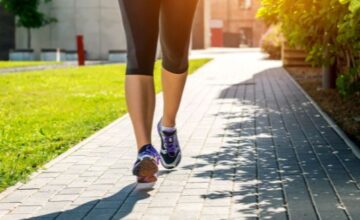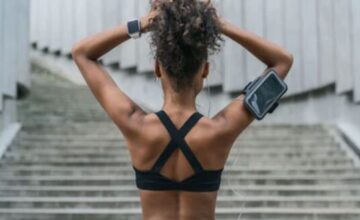
Wearing the right kind of gym wear is important when you are working out. But what about footwear? Ever thought of this?
From going walking wearing regular home slippers or wearing something loose or ill-fitted during intense training sessions, there can be a lot of mistakes you could be making, unknowingly.
Improper footwear could cause injuries
Most people make the mistake of using the wrong kind of footwear when they are working out. Improper footwear or gym gear could not just increase the risk of developing any kind of exercise injury but also make working out a tedious affair. From leg sprains, twisted ankles, shin splints, Achilles tendonitis and plantar fasciitis, there are a lot of things which could go wrong.
The right kind of footwear can make your workout better
Using the right kind of shoes is important. Wearing the right kind of footwear can also boost your performance.
Some experts even say that picking out the right pair of shoes is just as important as the workout itself. This is because most exercises you do make use of important muscle groups in your legs and using improper footwear could do extensive damage.
An important thing to remember is that you should be picking out shoes which support your workout, and not primarily go against it. This means that not all running shoes are meant to be used in the gym. The same way, long-distance hikes require special training shoes. When you are trying to choose the correct form of footwear, ensure that it wholly supports the exercise you set out to do. Otherwise, you can end up injuring your feet by using a shoe which is designed for a different activity. Here are some basic checks you should be ensuring before making your pick:
Pick the right size
When you are exercising, you are going to make use of core muscle groups in the body which need the right kind of support. Wearing shoes which are one size too big or a size too small could be risky. Ensure that you put comfort, and not the colour and style of the shoe first. Match the length, width and the shape of the shoes to your own feet. The ideal shoe should provide firm grip as well.
To find the right size, there’s also a smart shopping trick- give your shoes a try during the later half of the day, when your feet are likely to swell up a little. An additional tip is to try on the shoes with socks on. This would help you get a more realistic idea of how the shoes actually fit you when you workout.
Ensure your shoes fit well
Ascertaining the shape of the arch of your foot could also help pick the right suited shoe. Ensure that there is a thumb width space between your longest toe and the front portion of the shoe for the best fit.
If you experience any level of discomfort, leave the shoes away. It might take a lot of considerate tries and research but save you the trouble of injuries
Determine the demands of your workout
Not all exercises and workouts are designed equally and are practised in a different way. For example, running requires different footwork than any other moderate or high-intensity indoor activity, such as circuit training. Hence, it’s important to remember your workout requirements as well when you go shoe shopping.
Examine the making of the shoe
There are four important parts to a shoe- the sole and the tread which hit the ground, cushioning and the heel rise. All of these have important functions to serve. Depending on the type of workout you do, you need to look for supportive functions accordingly. While the soles and tread portions help prevent falls and build necessary traction with the base surface, ample cushioning is needed for comfort. Heels in the shoe help support forward-motion when you move. Try out different pairs to know which design offers maximum support and does not restrict motion.
Depending on these, you can go on to choose a lot of different variety of shoes best suited for your workout. A trained professional would also be able to help you make the right pick.
While these are some of the basic checks you should be making, here are some shoe styles which work the best:
If you go for walks
Since walking is a low-impact activity and the risk of injuries runs lower than other exercises, you do not require extra cushioning or heel support as well. Try and get a basic fitted shoes which support your natural foot movement.
If you go for running or jogging
Running or high-sprinted walking requires cushion support which could withstand force and support movement as you move your feet forward. If you go looking, you will also find a variety of shoe designs which support different running styles.
If you choose indoor cardio exercises
Indoor activities do not require the same traction or groove on the soles as outdoor sports, so, depending on the intensity of workout you do, you have multiple options to choose from. Having a basic amount of cushion support is sufficient. Pick a shoe which fits you well and works well with the movement.




